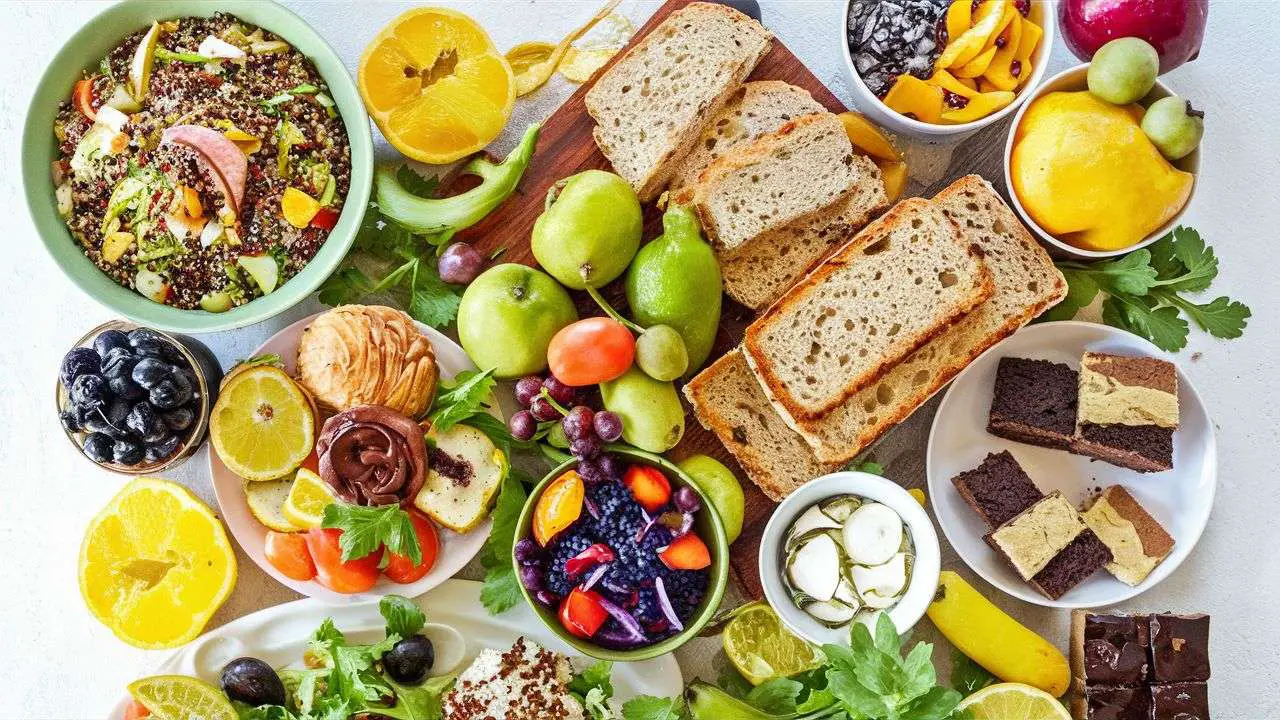Mothers who have had a cesarean section know that the incision after a caesarean section needs to be taken care of carefully. Improper care will lead to inflammation of the incision, which is not only detrimental to the body’s recovery, but will also make it impossible to take care of the baby, and is detrimental to the emotional communication between mother and baby. So, what should you eat after a caesarean section for fast recovery?

What to Eat After C-Section for Fast Recovery:
Due to wounds caused by cesarean section, intra-abdominal pressure suddenly decreases after delivery, abdominal muscles relax, and intestinal peristalsis is slow, which may lead to constipation. The diet arrangement should be different from that of natural delivery.
The mother can drink some boiled water 12 hours after the operation to stimulate the intestines. After peristalsis, you can only eat after passing gas; when you first start eating, you should choose liquid food, and then gradually move from soft food to solid food.
1. After cesarean section, you should not eat cold or spicy food, increase nutrition, and focus on light and nutritious foods such as fish, meat, eggs, soy products, and other protein-rich foods and fresh vegetables rich in vitamins. Mainly, this can promote postpartum wound healing.
2. Zinc-supplementing foods. Zinc deficiency will reduce the function of fibroblasts. Food supplements containing vitamin A can promote wound healing. It is mainly found in fish oil, carrots, tomatoes, and other foods.

3. Fatty foods. The lack of lipids will lead to defective wound healing. Fish oil is rich in fatty acids, which have anti-inflammatory effects and are beneficial to wound healing. Vitamin C foods can promote wound healing. Found in various vegetables and fruits.
- Glucose foods. Sugar is the main energy supplier of the human body. Sufficient energy supply is indispensable for wound healing. During the wound healing period, you can eat more sugar-rich fruits, which not only increase sugar content but also absorb sufficient amounts of vitamins.
Adding protein to your diet can promote wound healing and reduce the chance of infection. Foods rich in protein include various lean meats, milk, eggs, etc.
Healing and Recovery Tips:
- Take painkillers. After a C-section, pain is normal for two weeks, and the pain gradually decreases every day. Doctors may prescribe painkillers such as ibuprofen to mothers, which can be taken normally without any worries.
- Eat foods containing probiotics. Antibiotics used during surgery can kill healthy bacteria in the gut, and eating probiotic-rich foods can help restore healthy gut flora and aid recovery.
- Start walking. As long as the doctor allows it, get out of bed and exercise as much as possible. Start with short walks and gradually increase them to 30 minutes. Walking increases circulation, reduces the risk of blood clots, restores gastrointestinal function, and enhances the body’s ability to heal.
- Don’t lift anything heavy. During the first two weeks after delivery, do not lift anything heavier than 10 kilograms. Only after there is no pain can you gradually increase the amount of labor or activity.
- Prevent and treat constipation. The combination of pregnancy hormones and painkillers can easily cause constipation, and stress can also put pressure on wounds and cause pain. Try using a squat toilet or placing your feet on yoga blocks to straighten your rectum to help with bowel movements. Eat more foods rich in dietary fiber, drink plenty of water, and use stool softeners when necessary.
- Use an abdominal belt less. Although using an abdominal belt can reduce pain after a C-section, it takes over the role of the abdominal muscles, which may become progressively weaker over time. Abdominal bands can also put pressure on pelvic organs, increasing the risk of urinary incontinence and pelvic organ prolapse.
- Eat a reasonable diet. Nutrition also plays an important role in healing. After a cesarean section, you should eat more foods with anti-inflammatory effects and rich in vitamin C, such as berries and broccoli, because vitamin C can support the production of collagen, a protein that helps repair human tissue. Eat less red meat and change Eat chicken and salmon.
- Avoid doing abdominal crunches. During a C-section, seven layers of tissue are disturbed (cut away or moved) and the body needs enough time to fully recover. Until the abdominal muscles and fascia are repaired, any movement that pushes the abdominal muscles forward (such as crunches) has the potential to cause a hernia. Instead, try a modified plank or bridge pose.
Sample Meal Ideas for C-Section Recovery:
After a C-section, the first few days can be hazy with healing and becoming a new mother. Concentrating on intricate dishes may lead to needless anxiety. Here are some examples of meals that could be prepared as:
Easy to digest: Give preference to meals that are soft, properly cooked, and won’t aggravate your digestive tract.
Rich in nutrients: Provide your body with all the vital nutrients it needs to repair and produce energy.
For breakfast:
Avocado, whole-wheat toast, and scrambled eggs: The fiber in the whole-wheat toast promotes regularity, while the protein in the eggs helps repair tissue. Avocado contributes vital vitamins and good fats.

Greek yogurt with granola and berries: The berries provide vitamins and antioxidants, and the Greek yogurt provides calcium and protein for strong bones. For fiber and energy, choose granola made mostly of whole grains and minimal added sugar.
Oatmeal with nuts and seeds: For long-lasting energy, oatmeal provides an easily absorbed source of fiber and complex carbs. Nuts and seeds provide vital nutrients, protein, and good fats.
Lunch:
Brown rice and roasted veggies paired with salmon: Salmon is high in omega-3 fatty acids, which are good for mood and inflammation. Vegetables that are roasted include fiber, vitamins, and minerals. Complex carbs are found in brown rice, which gives long-lasting energy.
Whole-grain bread paired with lentil soup: Packed in fiber and protein, lentils help with wound healing and digestion. Whole-grain bread keeps you feeling full and provides more fiber.

On whole-wheat bread, a sandwich with chicken salad: Protein is provided by baked or grilled chicken, and everything is kept easily digestible with a light mayonnaise or yogurt-based sauce. For fiber, go for whole-wheat bread.
Dinner:
Baked cod with roasted sweet potatoes and green beans: Sweet potatoes are a wonderful source of fiber and vitamin A, and baked cod provides lean protein. Extra vitamins and minerals are added by green beans.
Turkey chili with cornbread: The chili can be loaded with vegetables like beans, tomatoes, and peppers for vitamins, fiber, and fluids. Ground turkey also adds protein to the dish. A little bit of carbs is added by cornbread to provide you energy.
Served with a whole-grain roll: Vegetable minestrone soup is a filling and nutritious dish that contains a range of vegetables and vitamins. A whole-grain roll keeps you full and provides extra fiber.
Snacks:
Berries, melon, and papaya are examples of naturally sweet, moisturizing fruits.
Carrots, cucumbers, and cherry tomatoes are examples of vegetables that are abundant in vital vitamins and minerals and low in calories.
Fruit-flavored yogurt is an excellent source of probiotics, calcium, and protein.
Hard-boiled eggs provide a convenient, high-protein snack.
A handful of nuts and seeds provides fiber, protein, and good fats.
Recall:
These are but a few instances. You may easily modify them to fit your dietary requirements and tastes.
Pay attention to your body. You should not force yourself to eat something if it doesn’t seem right.
It may be easier to eat little, regular meals rather than large ones, especially at first.
Conclusion:
In summary, your recovery from a cesarean section greatly depends on the food you consume. You may effectively support your body’s healing process by emphasizing nutrient-rich foods, staying hydrated, and adopting anti-inflammatory choices.
Recall that post-operative nutrition aims to support not just your body’s nutritional needs but also a quicker recovery and general well-being. Thus, give healthy options first priority to maximize your recuperation process. You are able to get through this stage with vigor and tenacity if you follow the proper diet and care. Cheers to a quick and full recovery following your c-section. Click to learn more.
FAQs:
Can I eat spicy foods after a C-section
It’s generally safe to consume spicy foods unless they cause discomfort or irritation. Listen to your body and introduce them gradually.
Should I avoid dairy products post c-section?
Unless you have lactose intolerance or your baby shows signs of dairy sensitivity, dairy products can be beneficial for calcium and protein intake.
Is it okay to drink caffeinated beverages after surgery?
Moderation is key. Small amounts of caffeine, such as a cup of coffee, are usually safe. However, excessive consumption may interfere with hydration and sleep.
Can I follow a vegetarian or vegan diet for faster recovery?
Absolutely. Plant-based diets can provide ample nutrients necessary for recovery, but ensure adequate protein, iron, calcium, and vitamin B12 intake.
How soon can I resume eating regular meals after a C-section?
Listen to your body and start with light, easily digestible foods. You can gradually transition to regular meals as your appetite and comfort level allow.
